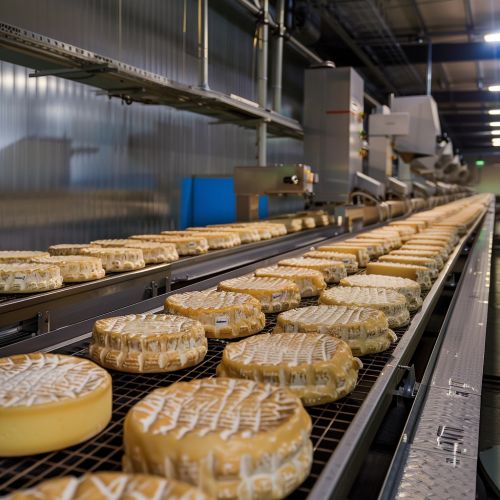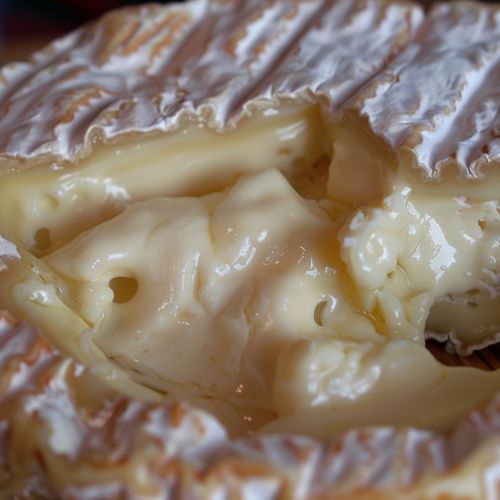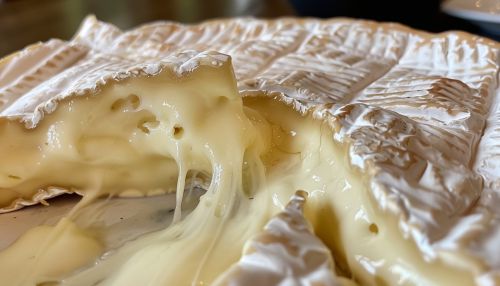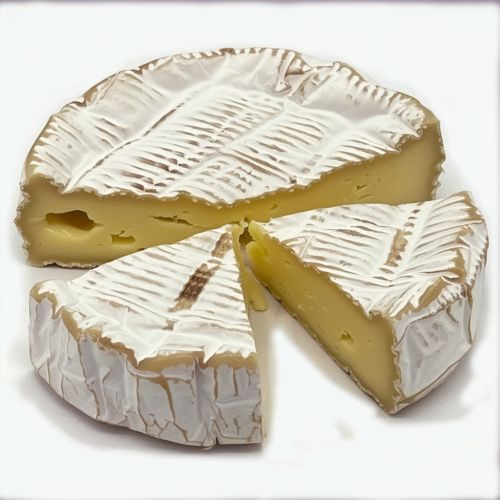Camembert Cheese
History
Camembert cheese is a type of soft, creamy, surface-ripened cow's milk cheese that originated in the late 18th century in Normandy, northern France. The cheese was reportedly first made by Marie Harel, a farmer from Normandy, who was given a recipe by a priest who was fleeing the anti-clerical government forces during the French Revolution. However, the origin of Camembert cheese is subject to many legends and is not definitively known.


The cheese gained popularity during the 19th century, particularly after the development of a wood box for transport by engineer Ridel in 1890. The box allowed the delicate cheese to be carried long distances and thus reach wider markets. Today, Camembert cheese is enjoyed worldwide and is a staple in French cuisine.
Production
The production of Camembert cheese involves a specific and careful process. Traditionally, the cheese is made by inoculating warmed cow milk with mesophilic bacteria, then adding rennet and allowing the mixture to coagulate. The curd is then cut into roughly 1 cm cubes, salted, and transferred to low cylindrical Camembert molds. The cheese is then allowed to ripen for at least three weeks.


If unpasteurized milk is used, the cheese can be consumed after it has been aged for three weeks. If pasteurized milk is used, the cheese is typically aged for four to five weeks. The ripening of the cheese results in a characteristic bloomy, edible rind and a creamy interior texture.
Characteristics
Camembert cheese is renowned for its creamy, buttery texture and strong, fruity flavor. The cheese has a bloomy white rind that is edible and adds a slight tang to the overall flavor. The interior of a Camembert cheese is a pale yellow and has a soft, almost liquid texture when at room temperature.


The flavor of Camembert cheese can vary significantly depending on its age and the specific practices of the cheese maker. Young Camembert has a milky and sweet taste, while a fully matured Camembert can have a strong, mushroomy flavor. The cheese is often served at room temperature and is popularly spread on bread or crackers.
Varieties
There are many varieties of Camembert cheese available, including versions made with different types of milk, versions with added flavors or ingredients, and versions made in different countries. Some of the most popular varieties include Camembert de Normandie, which is made only with unpasteurized cow's milk, and Camembert fermier, a farmhouse cheese made with raw milk and hand-ladled curd.


Other varieties of Camembert cheese may be made with goat's milk or sheep's milk, and some are flavored with herbs, spices, or truffles. There are also many imitation Camembert cheeses produced in other countries, which may or may not closely resemble the original French cheese.
Nutritional Information
Camembert cheese is high in fat, protein, and calcium, and is also a good source of vitamins B2 and B12. The cheese is relatively high in calories, with a typical serving containing around 85 calories. However, Camembert is also high in saturated fat and sodium, which can contribute to health problems if consumed in excess.

Despite its high fat content, Camembert cheese can be part of a healthy diet when eaten in moderation and paired with a variety of other foods. The cheese is often served with fruit, nuts, and whole grain bread, which can provide additional nutrients and help to balance out the fat and sodium content.
Cultural Significance
Camembert cheese holds a significant place in French culture and cuisine. The cheese is often served at the end of meals, before dessert, and is a common feature on cheese boards. It is also used in a variety of cooked dishes, such as baked Camembert and Camembert tart.

The cheese is so beloved in France that there is a museum dedicated to it, the Maison du Camembert in Vimoutiers, which offers exhibits on the history and production of Camembert cheese. The town of Vimoutiers also hosts an annual Camembert festival, where local cheese makers showcase their products and compete for the title of best Camembert.
